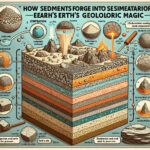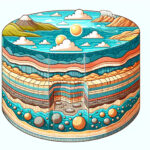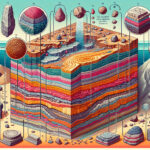Introduction to Sediment Formation
Welcome to the world where tiny grains tell the tale of our planet’s vast history—the story of sediment formation. It’s a tale as old as time itself, hidden in the granules beneath our feet. Each grain, a protagonist in an epic journey from towering cliff faces to the very ground we walk on.
Sediments mark the chapters of this journey, but how do they come to be? Imagine the mightiest mountain slowly being dismantled by a relentless army—no swords or shields here, just the tireless force of wind and water. Over time, the mountain capitulates, its fragments carried far and wide, settling into new stories. That’s just the beginning. Learn more about sediments and their journey from peaks to plains.
Studying this sedimentary script offers a lens into past climates, environments that no longer exist and biological organisms that have long since vanished. It’s crucial for geologists to decode the narrative held in these minuscule fragments to understand the Earth’s history and predict its future transformations.
And if you thought sediments were mere bystanders in the geological cycle, think again. They are key players, the unsung heroes forging soil fertility, birthing ores, and even sculpting our awe-inspiring landscapes. Unfortunately, the intricate details of Earth’s geological cycle don’t have clear internal documentation on our site. Still, researchers continuously piece together this complex puzzle.
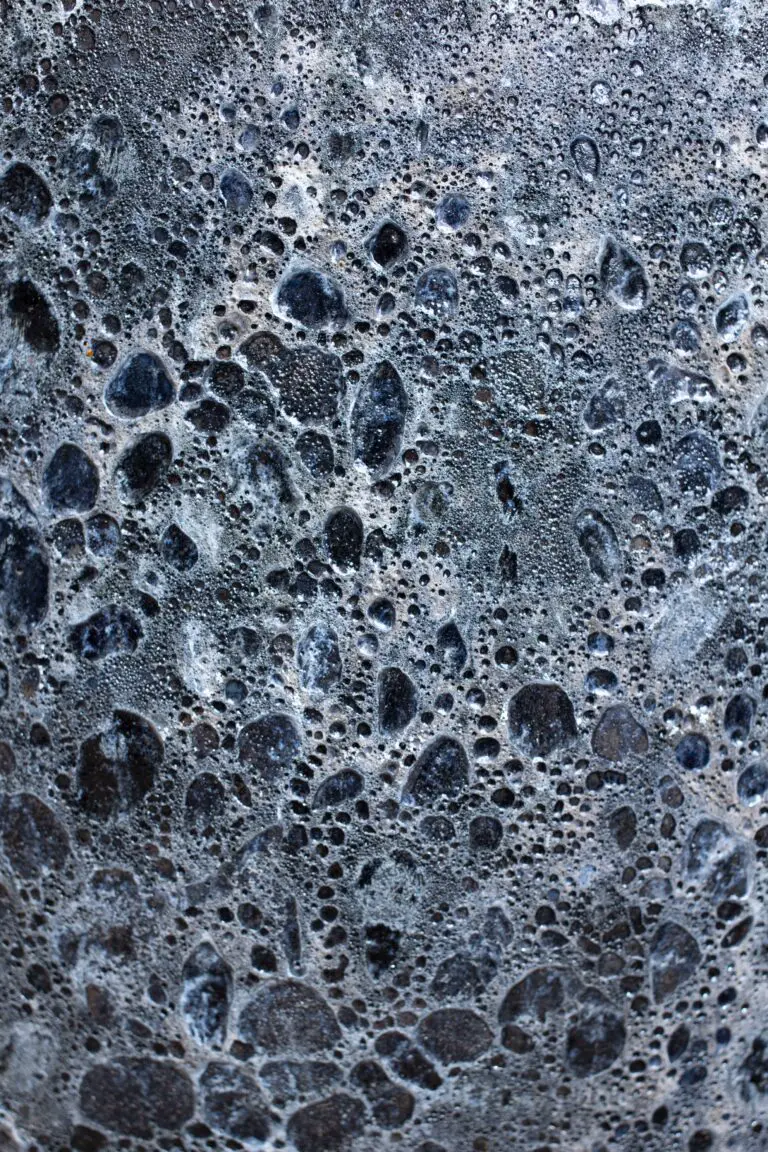
Each layer of sediment, each rolled pebble, and every grain of sand from a desert dune has a story. These stories, layered through time, are waiting for us to read them. So, let’s turn the page and dive deeper into this fascinating narrative, where even the smallest sediment can hold the secrets of our planet’s grand tale.
Understanding Erosion: The Starting Point
Picture this: a serene landscape, rocks comfortably resting for eons, only to be suddenly swept up in nature’s raw power. That’s erosion for you — the unsung hero in the epic tale of sediment formation. But what sets this grand process into motion? Let’s dig into it!
Think of erosion as nature’s own sculptor. The wind, the relentless artist, carving away at rocks, crafting intricate patterns—even a desert might boast its own collection of wind-smoothed sculptures. Water, too, joins in. From gentle streams that whisper over pebbles, to raging rivers that undercut banks, these aqueous forces tirelessly transport particles downhill. Then, there’s ice. Glaciers inch their way across the land, grinding rocks beneath like cosmic sandpaper.
Real-life examples of erosion are everywhere. Take the iconic Grand Canyon in Arizona, a monument to the persistent dance between the Colorado River and the land it slowly devours. Or consider the arches in Utah, where water and frost shatter rocks into breathtaking formations. These are not rapid events; they’re the product of time and the relentless forces of erosion.
Every grain of sand on a beach whispers a tale of a grand journey — a pebble plucked from a mountain’s peak, swept down by streams, bounced along riverbeds, and tumbled by waves until it’s finely ground into silken softness. Erosion is at the core of this saga, leading the charge in the intriguing backstory of how sediments are born.
Discover the captivating world of sedimentary rocks and how erosion sets the stage for their creation, transforming the rugged grandeur of ancient rocks into the foundations of new landscapes.
As we observe these mighty processes at work, we gain invaluable insights into geological time scales and Earth’s dynamic systems. Erosion, evidently, wears many hats: artist, transporter, and progenitor of sediments. It’s a fantastic reminder that even the smallest grains beneath our feet have histories as monumental as the mountains from which they descended.
Weathering: Breaking Down Rocks
Think of rocks as earth’s timeless history books, capturing eons within their solid forms. But even these robust narrators of the planet’s past aren’t immune to the relentless typing of nature’s elements. Let’s dive into the fascinating world of weathering—the unsung hero in the saga of how sediments form.
Imagine weathering as nature’s chisel and hammer, tirelessly sculpting the rock faces all around us. On one hand, we have physical weathering—the strong, silent type that works tirelessly to break down rock through sheer force. This includes the expansion and contraction of rocks during temperature changes, the wedging action of ice as it freezes and thaws in cracks, and the relentless growth of roots that pry rocks apart. Picture that massive oak in your backyard; its powerful roots sneak into tiny crevices in the soil, silently cracking open ancient stones like nature’s own version of jackhammer.
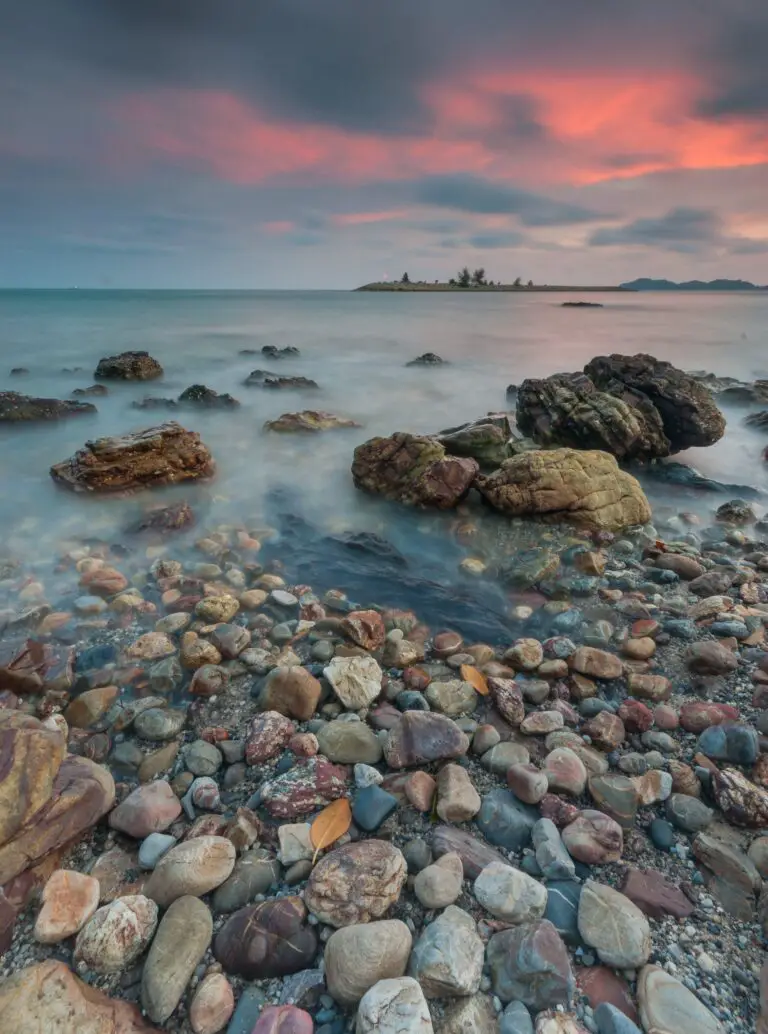
On the other hand, we have chemical weathering. Think of it as the alchemist of weathering processes, transforming the very essence of the rock. When water, oxygen, and carbon dioxide mix to concoct a natural elixir, rocks react, their minerals dissolve, and they change composition. If you’ve ever seen rusty streaks adorning a cliffside, then you’ve witnessed chemical weathering in action: iron within the rock reacting with oxygen and water to create that vivid splash of time-stained color.
Together, these two forces are unstoppable, creating a dynamic duo that completes the task of turning big, tough rocks into smaller, transportable particles, ready to journey across the earth and ultimately become sediments. All the beautiful sand on that beach you love? It’s the end product of a long story of weathering—a tale of transformation, molecule by molecule. And as you walk along, leaving your footprints in the sand, you’re not just meandering on tiny rocks; you’re strolling through pages of earth’s geological autobiography.
Transportation to Deposition: Journey of Sediment Particles
Imagine the life of a sediment particle, a tiny fragment of what was once part of a mighty mountain or an ancient sea creature’s shell. The birth of these particles is just the beginning of a thrilling adventure that sweeps them over vast distances from their origin. When Earth’s geological forces come into play, it’s time for these tiny travelers to hitch a ride and embark on a transformative journey across the planet’s surface. Let’s dive in and follow their path!
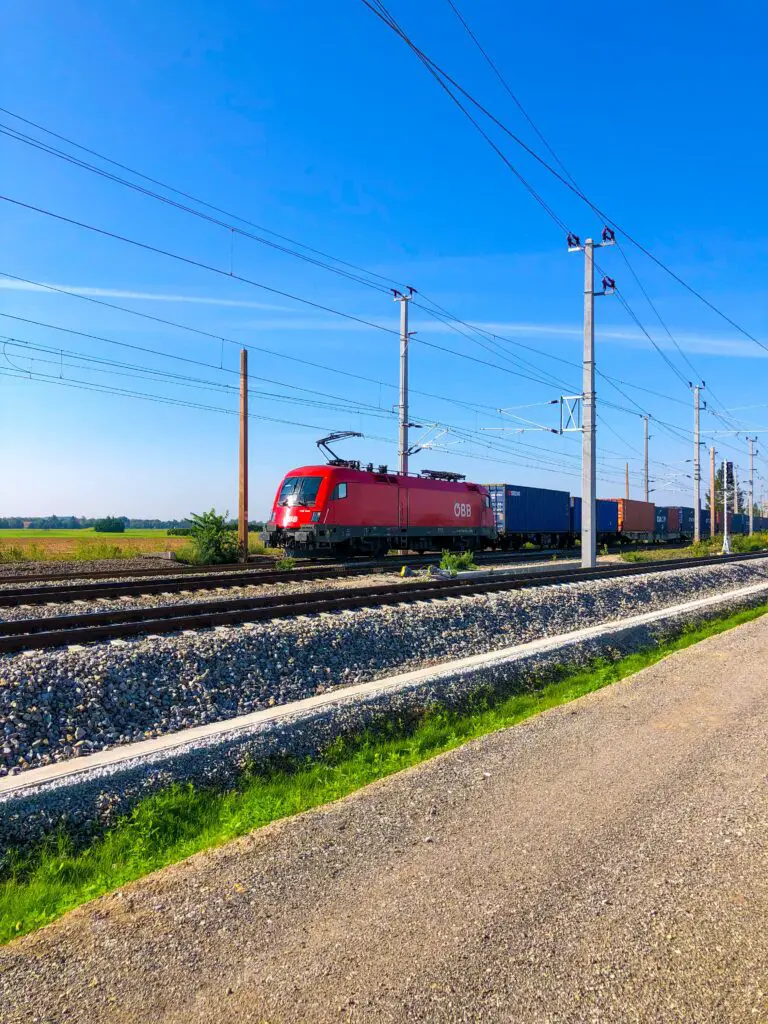
Our first port of call on this odyssey? The world’s rivers. Swollen with rainwater, they carry our gritty heroes downstream with a force that could rival a bustling city’s rush hour. Picture the sediment particles rolling along the riverbed, tumbling and turning, sometimes stopping in tranquil spots before the current picks them up once again. This is not merely a drift – it’s a continuous dance between energy and inertia.
Winds: Beneath the Soaring Eagles
Next up, the winds. High above, eagles soar on these very currents that sweep up lighter sediment particles like a magician’s trick. Whisked high into the air or skimmed across vast deserts, these particles can find themselves in the most remote corners of the world, etching and sculpting the landscapes as they go. The relentless gusts act as an artist, with the sediment as their medium, crafting dunes and ripples in the sands that mirror the waves of the sea.
Glaciers: The Mighty Movers
In colder climates, where mammoth glaciers carve through the land, our sediment particles find themselves trapped in a slow but inexorable crawl. These glaciers, like giant icy conveyor belts, grind and crush the rock beneath them, picking up particles along their path. They’re nature’s bulldozers, reshaping the land and depositing their sediment burden in moraines – the tell-tale ridges that mark a glacier’s passage.
Ocean Currents: The Global Conveyor Belt
Last but not least, the ocean currents. Here, our sedimentary friends might tumble from coastal cliffs or be swept up from the seabed to join a global circuit of marine transportation. Carried by currents that loop around the continents, these particles help build new lands – tropical beaches with sands as fine as sugar, created grain by grain from material journeyed thousands of miles.
In every corner of our planet, from the highest peaks to the depths of the ocean, sediments are constantly on the move. It’s a perpetual cycle that shapes and redefines our Earth’s landscape. Their journey is a testament to the dynamic world we live in – a world of relentless transformation, where even the smallest particle has a story to tell.
Depositional Environments: Where Sediments Settle
Have you ever wondered where that handful of sand or mud beneath your feet on a hike actually comes from? It’s all down to the Earth’s ability to play an amazing shell game with particles known as sediments. And the ‘where’ is just as important as the ‘what’. Let’s take a treasure hunt through the varied depositional environments where the bits and pieces that make up our planet’s surface find their final resting places.
Imagine strolling along a meandering riverbank—sediments here are in their prime real estate. Rivers, with their twists and turns, are master builders, carting along sand, gravel, and silt, which eventually settle when the water calms. From the sediment-rich banks of the Mississippi to the Ganges flowing with spiritual and earthly materials, these freshwater highways are iconic sediment hotspots.
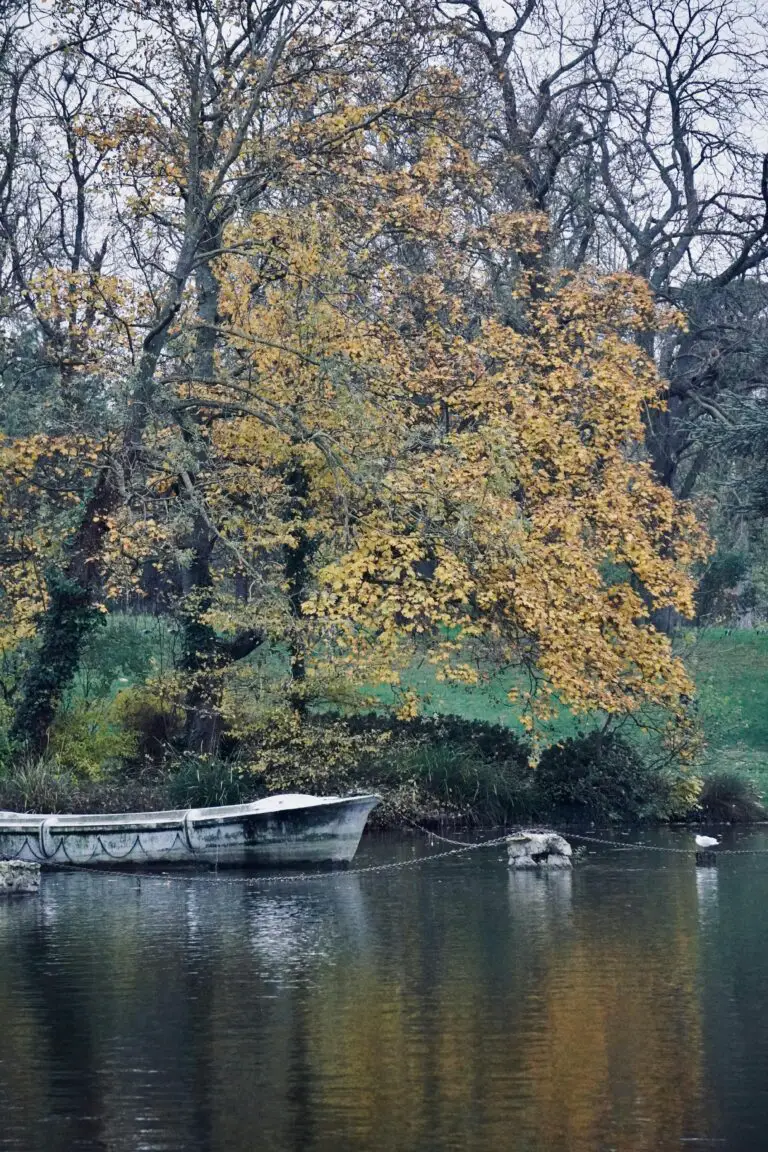
Freshwater not your scene? Let’s dive into the oceanic depths! Oceans, those vast blue expanses, have floors that are mosaics of sedimentary wonders. The gentle flutter of a fish tail near a coral reef can trigger a cascade of sand grains to drift and settle, creating an underwater dune field. Or ponder giant whales singing to the rhythm of floating marine snow (a mix of organic detritus and minerals) that eventually blankets the seafloor. Such grandeur!
Now, dust off your explorer hat as we venture into the windswept wilderness of deserts. Sands there don’t just pile up to make picturesque dunes that photographers adore. They tell tales of winds that have traveled distances, shaping the Earth’s surface with finesse, and leaving behind layers that whisper stories of time passing in the echoes of sandstorms.
Lakes, the serene siblings of rivers and oceans, are sediment gatherers of a calmer kind. Within their tranquil waters, the finest particles settle out, creating laminated layers that can read like the pages of an ancient history book. Want to know what the climate was like thousands of years ago? Lake sediments might just hold the answer.
But let’s not forget the often-overlooked, industrious workers of the depositional world: wetlands. These environmental sponges are the ultimate sediment traps, filtering out particles and pollutants, giving us cleaner rivers and oceans, and a habitat for a plethora of wildlife. Marshes and swamps, with their rich, organic sediments, support ecosystems that are as productive as they are vital.
These environments are but a few pieces of the geological jigsaw puzzle that create the backdrop of our daily lives. They’re the unsung heroes of the sedimentary world, each playing a unique role in the character and composition of our planet’s veneer. For a deeper dive into the types of materials and processes involved in these settings, check out this comprehensive resource on depositional environments.
From Sediments to Sedimentary Rocks: Lithification
Imagine you’re strolling along a serene riverbank or a bustling beach. As you look down, you notice the myriad of grains underfoot. These particles, or sediments, are the unsung heroes in the epic tale of sedimentary rock formation. But, how do these loose chapters bind together into a geological narrative etched in stone? Let’s uncover the transformative process that compacts and cements these minute players into the rocky legends that shape our Earth’s crust.
Compaction: The Squeeze of Geological Forces
Picture an ancient seabed, where layers upon layers of sediment quietly accumulate. Over time, the weight of these layers exerts a relentless pressure, squeezing the lower sediments tighter and tighter, much like a crowd at a rock concert pressing closer to the stage. This compaction drives out water and air trapped between the grains, making the pile denser and reducing its original volume significantly. The sediments are pressed into a mass that’s much more rigid and coherent, setting the stage for the next transformative act.
Cementation: Nature’s Glue
Enter cementation, nature’s own binding agent. As groundwater percolates through the compacted layers, it carries with it dissolved minerals like silica, calcium carbonate, and iron oxide. These are the molecular architects that, upon precipitation, effectively glue the sediments together. Imagine a sugar cube dissolving in a steaming cup of tea, only to crystallize and solidify as the liquid cools; it’s a similar scenario taking place over geological timescales. This natural adhesive fills the remaining spaces between sediments, solidifying the bond and giving birth to a new sedimentary rock.
In fact, this process is not just a story of the past. Even now, at this very moment, future sedimentary rocks are forming beneath our feet, along riverbeds, and within ocean basins—silent witnesses to the relentless cycle of rock formation. The limestone cliffs that awe climbers and the sandstone formations that paint the desert with their red hues are testimonials to this relentless geological craftsmanship.
Now, to give you a vivid look into this fascinating journey from sediment to stone, let’s dive into a visual exploration:
So, the next time you hold a seemingly mundane pebble or shard of shale, remember the extraordinary voyage it’s been on. From loose sediment to solid rock, each grain tells a story of Earth’s dynamic geological processes. And the journey doesn’t end here; sedimentary rocks continue to be sculpted by the elements, contributing to the never-ending cycle of rock formation and erosion that shapes our planet’s surface. In essence, each sedimentary rock is a chapter in Earth’s deep-time diary, waiting to be read by future generations.
Types of Sediments and Their Significance
Have you ever walked along a riverbank, your feet crunching over fragments of rock, or dove into the crystal-clear waters of an ocean, marvelling at the fine sand beneath you? What you’ve encountered are sediments, the geological storytellers of our Earth. But not all sediments are created equal — they come in various flavors, each with a story of its own. Let’s sift through these grainy pages of Earth’s historical book.
Clastic Sediments: Earth’s Shattered Treasure
Picture the majestic mountains, weathered by wind and rain, breaking down into a myriad of fragments. These pieces are on a journey, carried by rivers, glaciers, and the wind, to their final resting place, be it a serene riverbed or the vast ocean floor. These are clastic sediments, born from the physical breakdown of rocks, known as ‘weathering.’ Rocks fracture into sand, silt, and clay, each with a tale to tell. Sand, for instance, can build mighty dunes that migrate like slow-moving waves across deserts.

Biogenic Sediments: The Fossils of Life’s Legacy
Now, envision the ocean teeming with life. When these tiny marine organisms, like corals and foraminifera, perish, their remains descend into the abyss, layer by layer. Over time, these biological remnants compact into biogenic sediments, crafting limestone and chalk formations that stand the test of time. These sediments are not just rocks; they’re time capsules, preserving the biological history of past millennia within them. The famous White Cliffs of Dover are a testament to this wondrous natural process.
Chemical Sediments: Precipitates of Elemental Alchemy
And then there’s the intriguing world of chemical sediments. Unlike their clastic and biogenic counterparts, chemical sediments are the product of dissolved minerals precipitating from water. Picture stalactites and stalagmites in caves, or the rings of minerals left behind as a lake evaporates; these are the masterpieces of chemical sedimentation. Salts and gypsum come together to form stories that speak of fluctuating climates and drying lakes.
So, whether it’s the tiny grains of sand beneath your feet, the white cliffs standing tall against the march of time, or the sculptural wonders within a cave, sediments are more than just lifeless particles. They are the keepers of our planet’s secrets, vital for unraveling the mysteries of Earth’s history. Next time you come across these geological bits and pieces, remember you’re touching pages from an ancient, ever-evolving storybook.
The Role of Sediments in the Rock Cycle
Imagine the Earth as a colossal, never-ending construction site. Here, sediments are the unsung heroes—the raw materials continuously reshaped to craft the geological marvels that dot our planet’s surface. Sediments, the broken fragments of rocks, organic materials, and minerals, play a pivotal role in the grand scheme known as the rock cycle. It’s a ceaseless, dynamic process where sediments are fundamental in creating, destroying, and transforming the very ground beneath our feet.
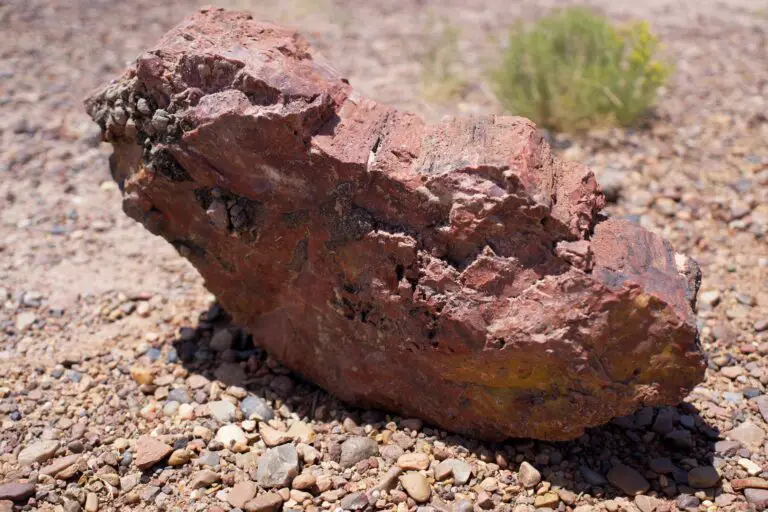
Let’s break it down: the journey begins when pre-existing rocks weather away, courtesy of the wind, water, or a freeze-thaw cycle that causes them to crack and crumble. The resulting sediment particles are on the move, travelling via rivers, glaciers, or the simple tug of gravity, only to settle down in a new location. There, layers upon layers pile up, compressing under their own weight, evicting trapped water, and slowly solidifying into sedimentary rocks. This isn’t just a process you read about in books; it’s happening right before our eyes, from the sand on our beaches to the mud at the bottom of a lake.
But the story doesn’t end there. Over eons, these sedimentary rocks can undergo intense pressures and temperatures deep within the Earth, morphing into metamorphic rocks. And if conditions are ripe, they might even melt into magma, eventually cooling to form igneous rocks. This spectacular transformation is the rock cycle’s way of recycling and reusing materials, with sediments as the star players.
Consider the majestic cliffs of Dover or the grandeur of the Grand Canyon. These iconic landmarks are sedimentary masterpieces, showcasing the artistry of sedimentation on a canvas that spans millennia. Sediments don’t just form rocks; they record history, trapping within them fossils and clues that tell tales of Earth’s past climates, life forms, and geological events. Without sediments, our understanding of Earth’s history would be like a library with half its books missing.
So, whether it’s the gritty sand between your toes or the chalky limestone of ancient buildings, remember that these are the fingerprints of a planet that never stops changing. Sediments, in their humble journey, stitch the fabric of Earth’s geological attire, ensuring that the rock cycle continues its timeless waltz across Ages.
Human Impact on Sediment Formation and Ecosystems
When it comes to the ground beneath our feet, it’s easy to overlook that the sediments forming soil layers are the unsung heroes of our planet’s health. However, not all sediment stories are naturally occurring tales. Human activities, particularly construction, deforestation, and pollution, play a dramatic role in shaping the sedimentary narratives of our landscapes. Let’s dig into how these human endeavors are stirring up more than just the earth.
Constructing Change: Building Up and Tearing Down
Imagine the bustling sound of a construction site: machines roaring, concrete pouring, and steel rising towards the sky. These urban symphonies are signs of progress and development, but the crescendo masks a quieter disharmony occurring at the ground level. Every foundation laid for a new building or road disrupts the natural sedimentation process. Soil erosion accelerates as vegetation, which once held the soil in place, is stripped away. Suspended sediments can cloud waterways, affecting aquatic life and water quality—even far from the construction site’s cacophony.
Real-life examples are not hard to find. Consider the urban sprawl expanding over what once were verdant fields and forests. Here, the land is forever changed, with natural sediment layers disrupted, and new patterns of erosion and sediment deposition introduced by the almighty force of urbanization.
Deforestation: A Clear and Present Danger to Sediments
Then, there’s the sound of chainsaws and falling timber—a different kind of construction that’s just as impactful. As we clear swaths of forest for agriculture, mining, or urban development, the effects on sediment formation are profound and multifaceted. The loss of trees, which anchor the soil and foster organic matter accumulation, leads to an increased frequency of landslides and mudslides, particularly during heavy rainfalls. What was once a stable hillside can become a river of mud, with sediments crudely carving their way through the landscape, leaving a trail of destruction in their wake.
These altered landscapes are not merely scars on the earth; they are open wounds that threaten the health of natural ecosystems. Sediment overload in rivers and streams can suffocate fish eggs, disrupt aquatic plant growth, and alter the delicate balance of freshwater environments.
Pollution: The Sediment Saboteur
Imagine a world where you can’t drink the water from your tap without filtering it for toxins. This could be the result of sediment pollution—a silent invader that often goes unnoticed until it’s too late. When the remnants of industrial processes, agricultural runoff, and urban waste find their way into our water systems, they carry with them a cocktail of harmful chemicals and heavy metals. These pollutants cling to sediments like magnets, turning these tiny particles into toxic carriers that can infiltrate aquifers and choke the life out of rivers and streams.
From oil spill residues caking once pristine shorelines to the insidious creep of pesticides breached into aquatic systems, human-sourced pollutants transform innocent sediments into vectors of ecological harm. The contrast is stark when comparing these scenarios to the untouched environments where sediments form unspoiled layers, nurturing life rather than imperiling it.

In recap, while sediments are naturally occurring particles that contribute to the dynamic tapestry of Earth’s geological processes, the human touch can alter this legacy fundamentally. The way we build, the way we harvest our forests, and the way we dispose of our waste can have lasting effects on sediment formation and the health of ecosystems—effects that we’re just beginning to fully understand and must urgently address.
Protecting Sediment-Enriched Habitats
Imagine a world where the land is rich, fertile, and teeming with life—a scenario out of a nature documentary, with every step uncovering a different creature or plant. That’s the essence of areas with high sedimentation. These zones are nature’s hotspots for biodiversity. But why is guarding these gems of the natural world so crucial?
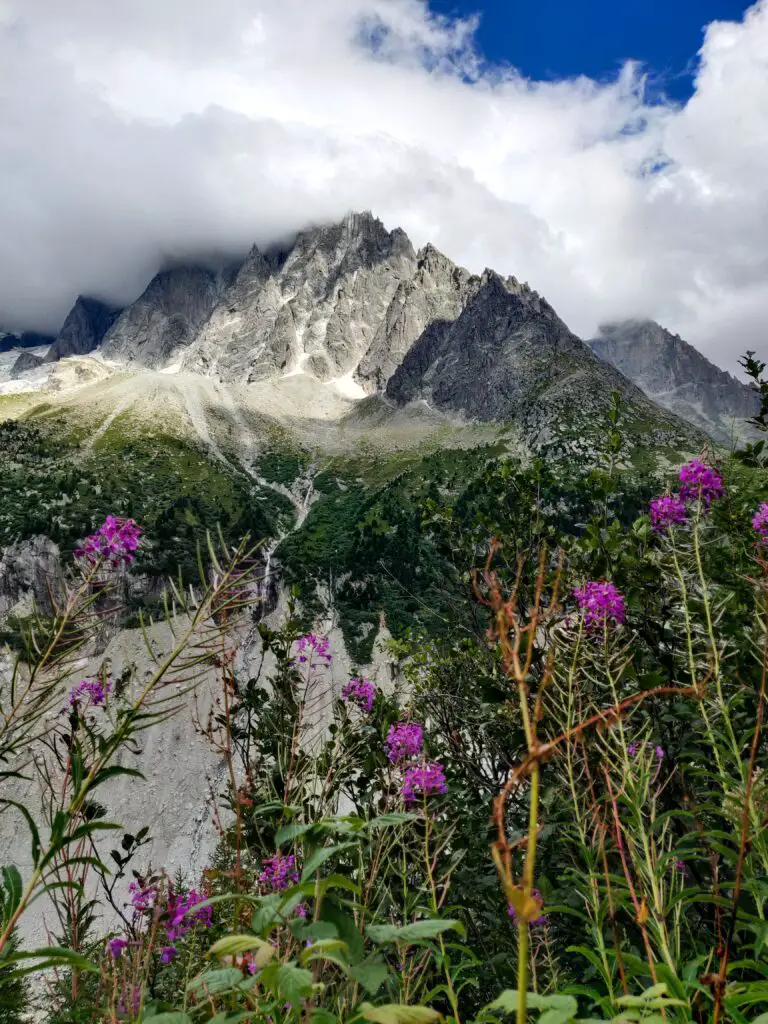
Take, for instance, the lush floodplains created by sediment-rich rivers. Not only are they home to a dizzying array of species, but they also act as natural barriers, minimizing the impact of floods that could wash away the landscape. High sedimentation creates environments where life flourishes, but such environments constantly face threats from urban development, pollution, and climate change.
Being cognizant about the significance of sediment-enriched habitats goes beyond the aesthetically pleasing scenery they offer us. It’s about understanding the key roles they play in maintaining ecosystems. For example, consider the mangrove forests. Their dense roots, submerged in sediment-laden waters, form a fortification against coastal erosion. These robust barriers shield the coastline and reduce the power of storm surges, safeguarding both terrestrial and marine life.
Moreover, these sediments are like Earth’s diary, preserving a record of environmental changes over millennia. They are archives that can help us predict the future by understanding the past, giving us clues about how life evolved and how climate patterns shifted. Guarding these areas also means protecting a legacy of knowledge that can inform our actions moving forward.
In a world that’s rapidly changing, the conservation of sediment-enriched habitats is a clarion call for action. To prevent erosion, maintain biodiversity and sustain ecosystems, it’s pivotal we recognize these treasures for what they are—not just parcels of land, but living libraries of Earth’s history, awaiting our stewardship to pass on their tales to future generations.
Conclusion: The Significance of Sediment Formation
Comprehending the creation of sediments is not just a topic buried in the dusty shelves of geology; it is a dynamic narrative of Earth’s transformation and a testament to nature’s resilience. Sediments are Earth’s storytellers, each grain akin to a page in our planet’s profound geological autobiography. Understanding how these particles come together provides us with essential insights into past climates, the formation of natural resources, and helps us predict future geological changes.
The cascading effects of sediment formation ripple through ecosystems and foster diverse habitats. Consider the mighty river that carves its way through the landscape, depositing sediments along its banks, shaping fertile floodplains where civilizations thrive. Or picture wind sculpting desert dunes, each a testament to the Earth’s perpetual change. Life, as we know it, is deeply intertwined with these particles—the bedrock of biodiversity and cornerstone of environmental conservation.
But why should this matter to us? As stewards of this blue marble we call home, recognizing the significance of sediment deposition is crucial for sustainable development and conserving natural landscapes. By tracing the journey of sediments from mountains to the sea, we grasp the continuous cycle of renewal that shapes our shores and nourishes marine ecosystems. It is a humbling reminder of our role in safeguarding these natural processes, as they are intrinsic to the health of our planet.
The impact of understanding sedimentology extends beyond pure science. It empowers us to make informed decisions regarding land use, assess the risks of soil erosion, and manage our natural resources responsibly. With each study of sediment layers, we peel back another layer of Earth’s history, gaining perspective on how our actions today will be etched into the legacy of tomorrow.
Our engagement in protecting these seemingly insignificant particles is symbolic of a much larger commitment to preserving the intricate balance of our environment. As we decipher the secrets held within sediments, let us not forget the vital role they play in maintaining the geological processes that have allowed life to flourish on Earth for millennia. It’s not just about rocks and minerals—it’s about our shared future, sculpted one sediment at a time.
For a deeper look into how these remarkable formations come into existence, immerse yourself in the following video snapshot that beautifully encapsulates the process of sediment creation:
Embracing Earth’s Natural Artistry
As we conclude, let’s not merely see sediment formation as a geological curiosity, but as Earth’s artistry in action. It’s a legacy of time, pressure, and the elements consorting to craft landscapes that awe and support life in its myriad forms. The next time you step onto a sandy beach, spare a thought for the immense journey those grains have embarked upon, and the invaluable stories they have to tell.
Frequently Asked Questions
Curious about the nitty-gritty of how sediments form? You’re not alone! Let’s dive into some of the most common queries that have rocked the minds of many.
What’s the Timeline for Sedimentary Rock Formation?
Imagine watching paint dry—tedious, right? Now picture that process taking millions of years—that’s the creation of sedimentary rocks for you! It begins with tiny particles, like the sand you find at the beach, which accumulate layer after layer. Over time, pressure cements them together, turning loose sediments into solid rock. The timeline? It’s not a quick fix; it can span from thousands to millions of years depending on factors like particle size and the weight of overlying materials.
Are We Making Waves in Sedimentation Rates?
It’s no secret that human activities can stir up quite some silt! Deforestation, urban development, and agriculture accelerate erosion, sending sediments into overdrive. High sedimentation rates can choke rivers, delta regions, and damage aquatic habitats—but it’s not all doom and gloom. Understanding our impact can lead to sustainable practices that keep our planet’s sedimentary processes as balanced as a tightrope walker.
The Significance of Studying Sediment Layers
Digging through sediment layers is like flipping through the pages of Earth’s diary. It reveals climate changes, past life forms, and even the movement of continents. They are Earth’s historical archives, storing information from millions of years ago. By studying these layers, scientists can forecast future changes and stitch together our planet’s dynamic history—pretty cool if you ask me!
Let’s take a visual leap into the world of sediments with this eye-opening video:
Next time you’re out kicking rocks or strolling along a sandy shore, think about the incredible journey those tiny grains are on. Who knows, in a few million years, someone might be studying the very ground you’re standing on!

